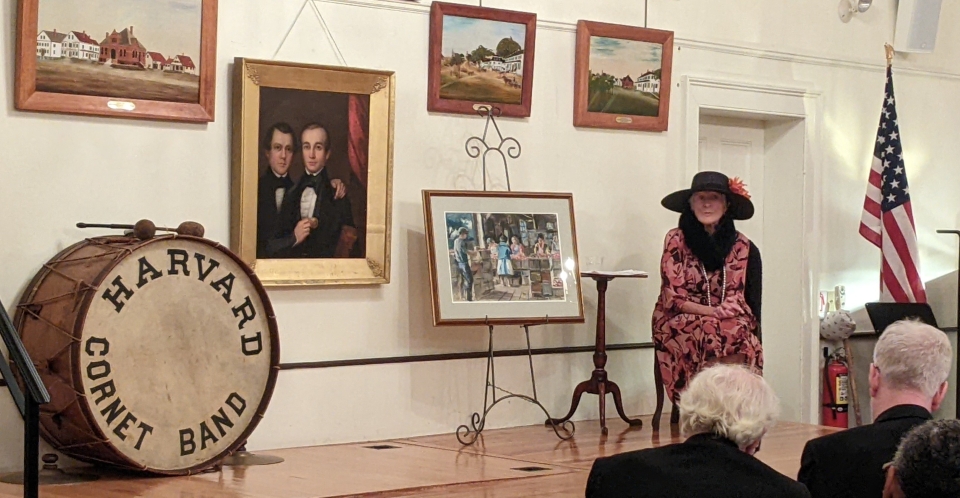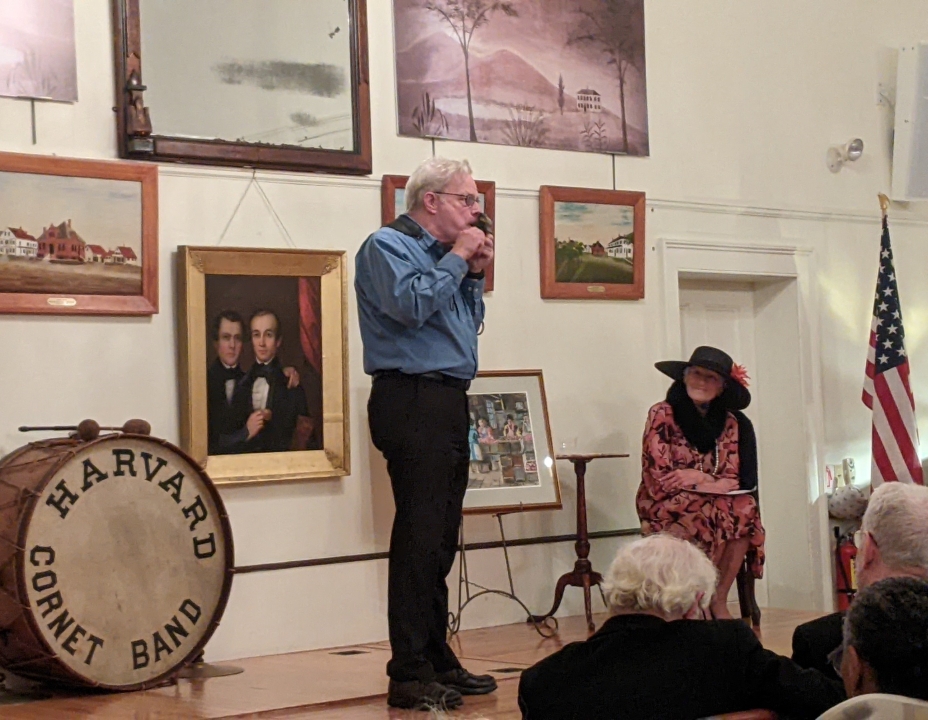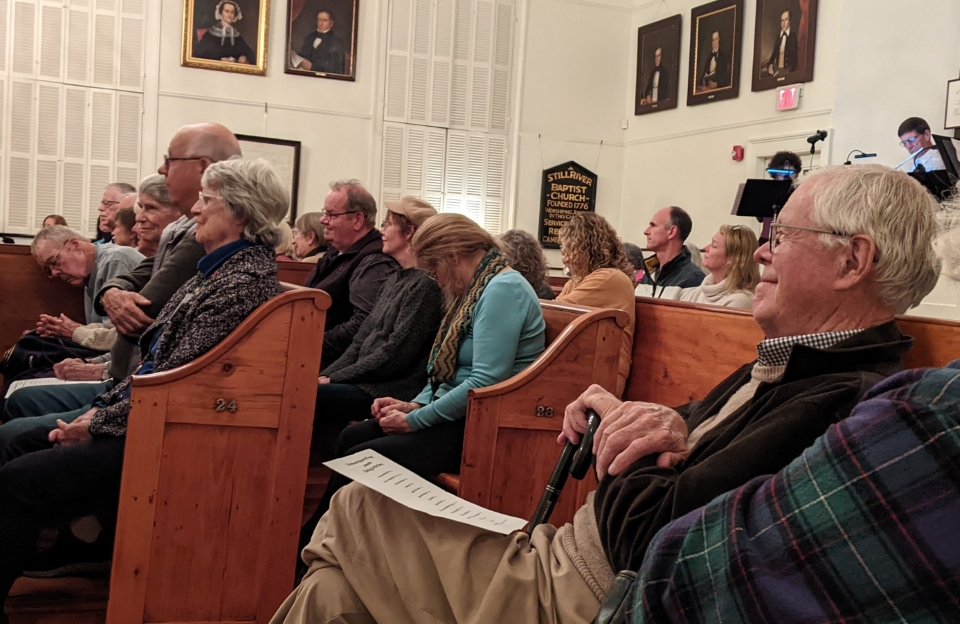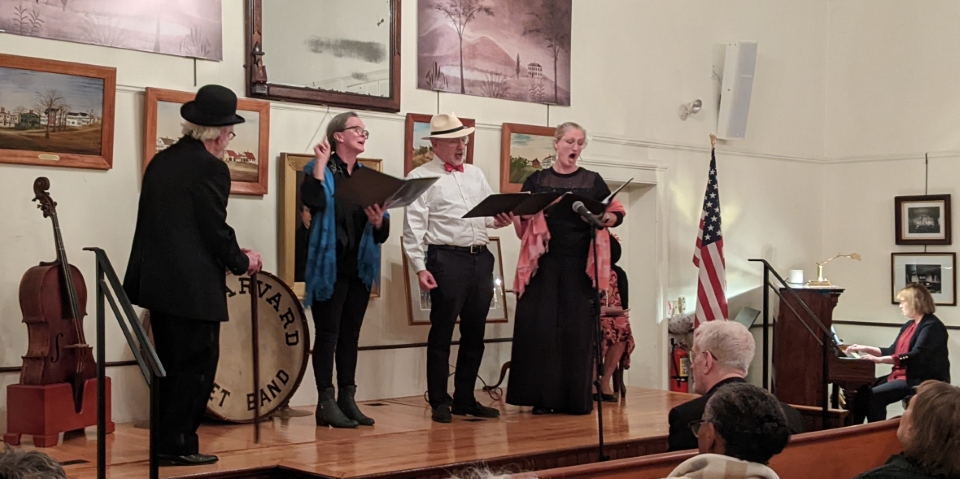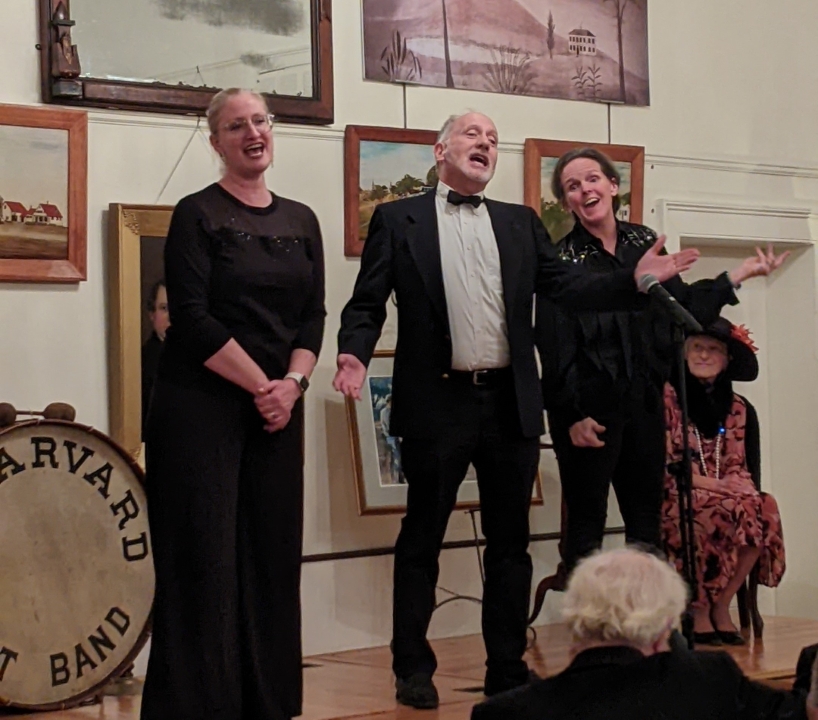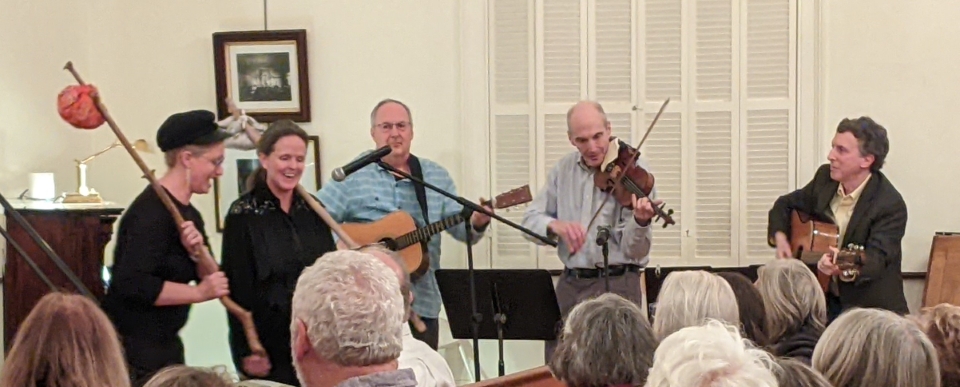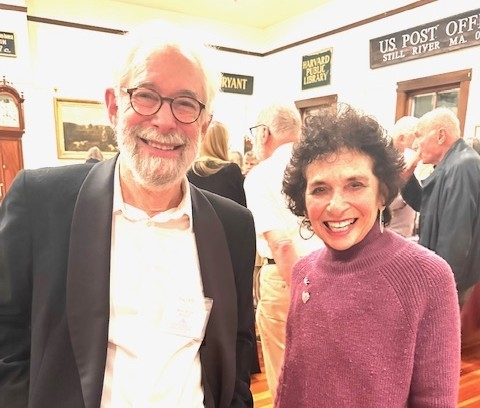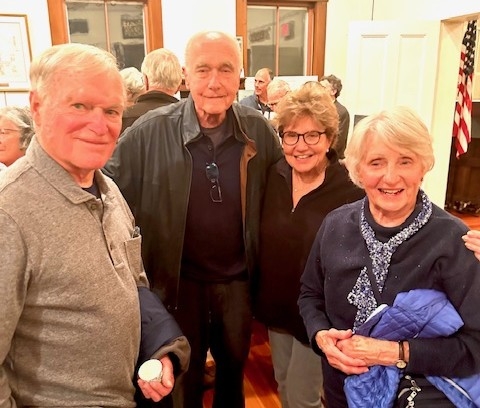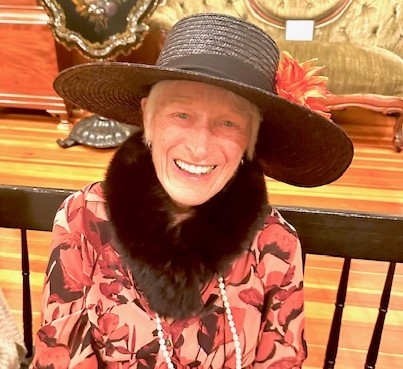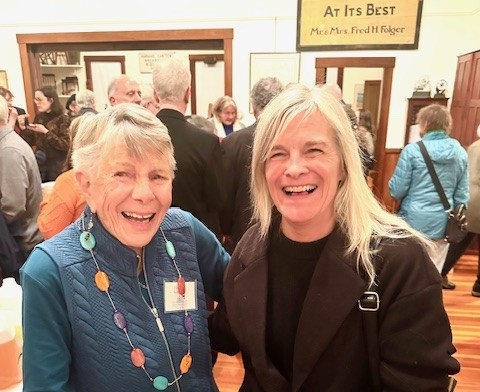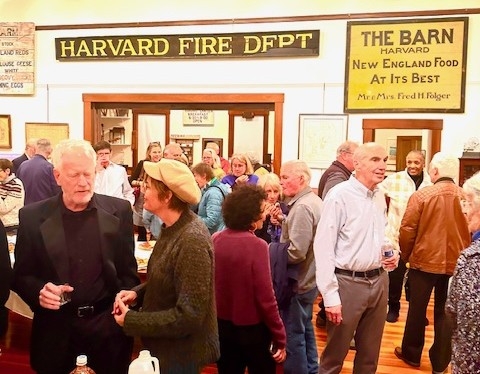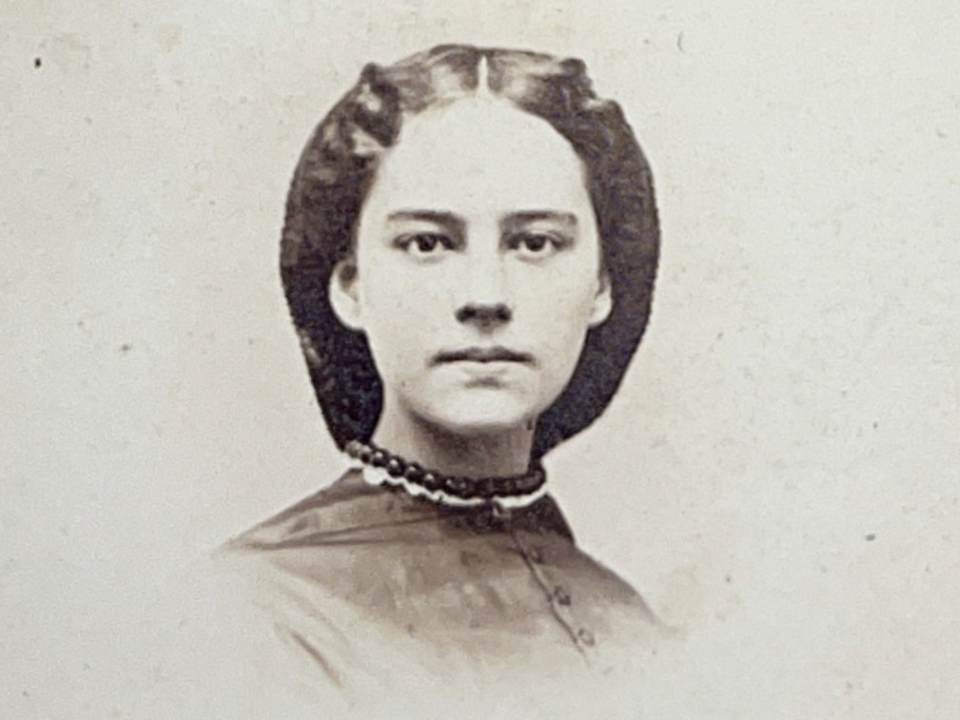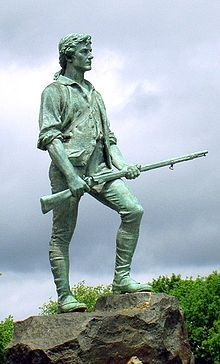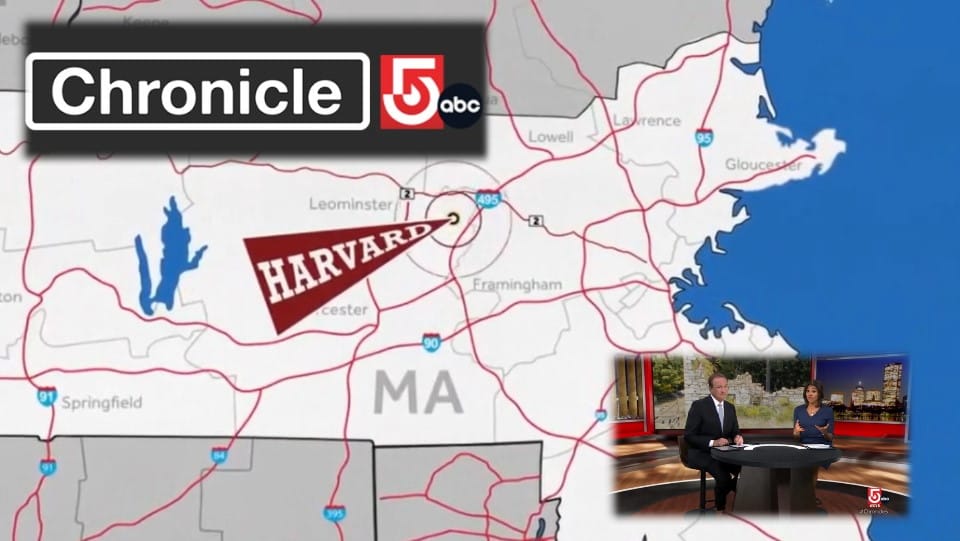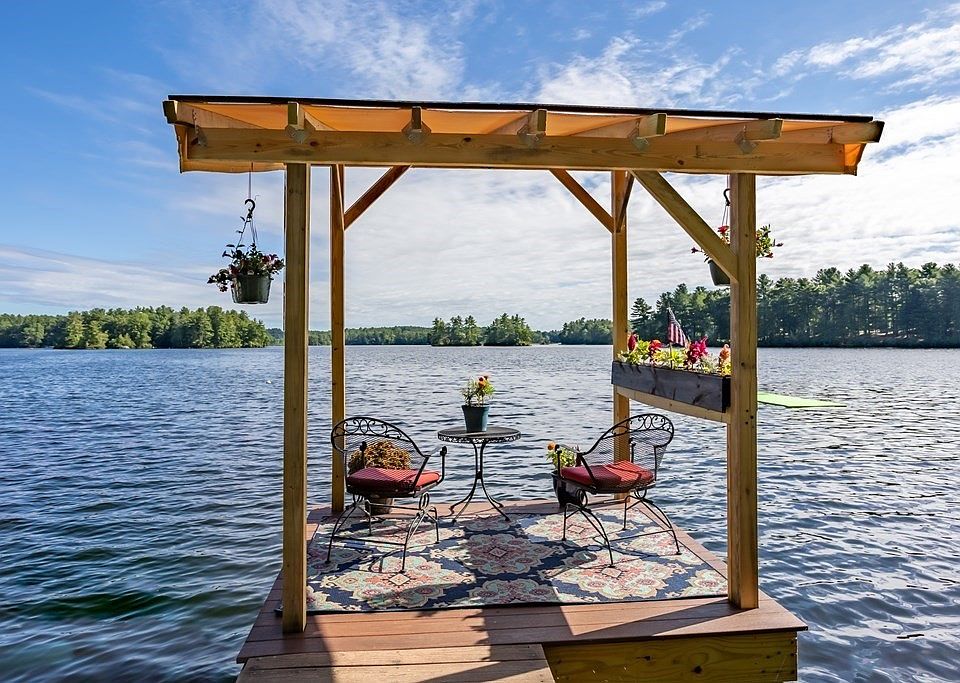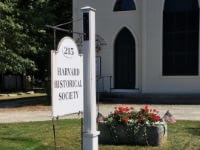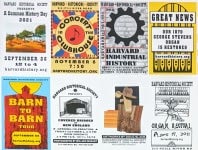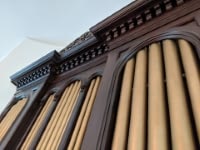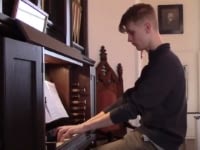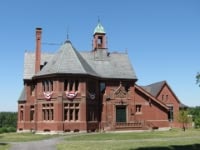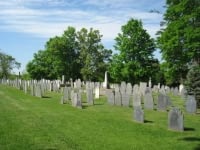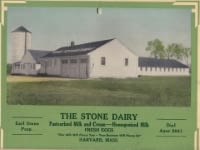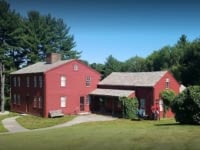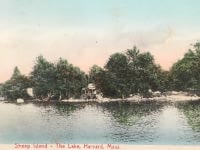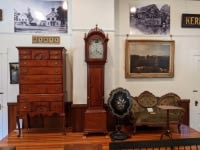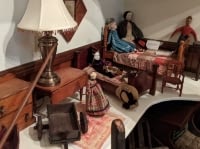Dancing in the Streets: A Live Musical Program of the Arts in Harvard with Clara Endicott Sears
A community with so many arts and artists.Was on
Wednesday November 5, 2025
Program
Downton Abbey Theme – Lunn
Put on a Happy Face – Strouse & Adams
On the Road Again – Nelson
Downtown – Hatch
Apple Pickers Reel – Hanks
Lilly Bell Quickstep – Friederich
O Sole Mio – diCapua
Infernal Gallop – Offenbach
My Robe is New, Mother Ann’s Song – Shaker 1844
Hop Up and Jump Up – Shaker 1847
Simeon Green Tribute – Wolfe
Fisher’s Hornpipe & Irish Washerwoman – Traditional
Summertime – Gershwin
In the Mood – Miller
Dancing in the Streets – Stevenson, Hunter, Gaye
Claire Rindenello creator and director
Special thanks to our performers!
Claire Rindenello – flute, piccolo, program creator
Carlene Philips – Clara Endicott Sears, writer
Steve Abrams – Simeon Green Dance Master
Britt Argow – soprano
John Chapman – piano
Ralph DeFlorio – guitar
Paul Funch – flute
David Gilfix – guitar, mandolin
Margery Goldstein – flute, piccolo and arranger
Mike Jacobs – clarinet, flutes, rollmonica, sax
Dave Kassel – fiddle
Michael Lauer – bass
Emilie MacDonald – alto
Debbie Sheetz – piano
Dancers:
Jacob Bloom
Nancy Bloom
Janice Burdick
Dana Fine
Cortni Frecha
Christopher Hurley
Anne Ketchen
Richard Ketchen
David Marteney – audio visuals
Joe Ofria – graphic design
Doug Slade – art
Patrick Vallaeys – audio visuals
Thaler Bishop – video recording and editing
Published: October 24, 2025
There will be ‘Dancing in the Streets’ at the Historical Society
Rindenello said, as she has about every past performance, “This is going to be so much fun, and all the musicians are very excited.”
Mistress of ceremonies will be Clara Endicott Sears, founder of Fruitlands Museum, enacted by Carlene Phillips, who is a Historical Society board member. Although not an artist herself, Miss Sears was an avid supporter of the arts and of the Historical Society.
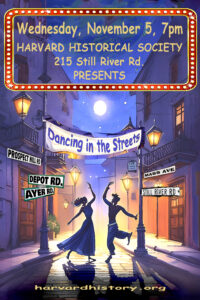 The publicity poster “Dancing in the Streets” was done by the late Doug Slade, even before Rindenello had a clear plan for the show. She loved the poster and wanted to honor Slade, who was a friend, artist, and society board member, so she made the title work.
The publicity poster “Dancing in the Streets” was done by the late Doug Slade, even before Rindenello had a clear plan for the show. She loved the poster and wanted to honor Slade, who was a friend, artist, and society board member, so she made the title work.
There is a lot about dancing, not in the streets, but in places like upper Town Hall, the Thaddeus Pollard house in Still River, and the boathouse at the pond, torn down in 1984. Rindenello expanded the theme to encompass music and art as well as dance. There is a script, and Rindenello has found fitting music—some serious, some humorous—to go in different places. She could hardly stifle her laughter as she added, “I don’t know how I come up with the pieces—on a run, in the shower.”
There are 14 musicians in the show, most of whom have been singing and playing instruments with Rindenello since the original “Playing with Music.” She said they are all highly talented, giving as an example Michael Jacobs, who plays every woodwind except the bassoon. Margery Goldstein, Rindenello’s longtime friend and fellow flutist, arranges music, and Deborah Sheetz “can do whatever you ask her to on the piano,” said Rindenello. “Everybody is different, but everybody adds to the mix.”
“I’m just the facilitator,” claimed Rindenello. “It’s what the musicians do with what I give them.” She knows them well enough to match them with the music she selects, and no one questions her. For months, they practice their piece(s) by themselves in different groupings, but none of them knows the theme or how the show will come together until dress rehearsal, a few days before the performance. “Then everyone is surprised and delighted at what others have done. It remains flexible right up to the last minute,” said Rindenello.
Show highlights
A well-known name in town during the last half of the 1800s was Simeon Green, who will be paid tribute in the actual song that was sung at Town Hall in celebration of his 50 years teaching dance and music to Harvard’s young people. The words, put to a familiar tune, were printed in a 1939 issue of the Clinton Item. Singers Britt Argow, Emilie MacDonald, and Michael Lauer will do the honors.
Music played an important role in both secular and religious events in town, and the society has a number of old instruments, some of which will be on display. The bass viol, for example, was built in 1804 by Benjamin Willard of Lancaster. What happened when a bass viol first appeared in the Harvard church is quite a story. Historical Society president Steve Abrams will give a performance on the Rolmonica.
By a miracle of technology, a group of Shakers will appear to present one of their highly stylized dances. The music and dancing was not for entertainment but rather was part of their religious ritual.
At what is often still referred to as “The Inn,” at 11 Fairbank Street, a scenic mural was painted on the walls of the front entry, still visible today. Done by itinerant painter Rufus Porter, it was probably painted in the 1830s, when there was a store in the building. A replica will be part of the stage set.
Rindenello recalled the first production in this series, where the musicians had no idea what was going on and questioned how Rindenello’s method could ever work. “But now they know it will, and that everyone will have a good time before, during, and after the performance.”
A reception will follow the program. A suggested donation of $10 will help support the society’s future programming.
From The Harvard Press by Carlene Phillips · Friday, October 24, 2025
Copyright Harvard Press, LLC, 1 Still River Road, PO Box 1, Harvard, MA 01451, 2025.
This work is licensed under a Creative Commons Attribution-NonCommercial-NoDerivatives 4.0 International License
More Historical Society Events, past and present...
More related:











